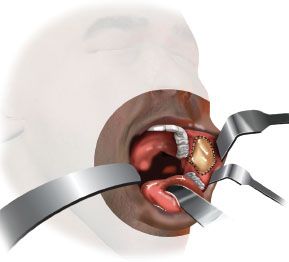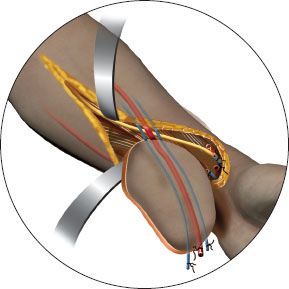FIGURE 4.1 Cancer may arise from the buccal mucosa but more frequently arise from the alveolus or tongue and extend onto the buccal mucosa. The defect should be carefully measured to design the flap appropriately.

FIGURE 4.3 The flap is sutured into the defect with mild redundancy to prevent trismus as the tissue contracts during healing.
The vascular pedicle is typically positioned in the ipsilateral neck, and a microvascular anastomosis with a running 9-0 Nurolon (Nylon, Ethicon) suture is performed on the arterial system. The facial artery is preferred given its location, size, and geometry. The venous anastomosis is accomplished with a venous coupling device (Synovis), although there are occasions given the final flap/pedicle geometry or size mismatch of the veins that a sutured venous anastomosis is required. One or two implantable Dopplers are then placed on the arterial system, venous system, or both for continuous monitoring of the vascularity of the free tissue transfer.
POSTOPERATIVE MANAGEMENT
Postoperatively, the patient should be NPO for 1 week unless the patient has received radiation in which case, I recommend 2 weeks.
COMPLICATIONS
Complications include flap failure or fistula. Both are rare, but both may pose a significant problem when they occur. Other complications include donor site morbidity or scar contracture leading to trismus.
Stay updated, free articles. Join our Telegram channel

Full access? Get Clinical Tree



